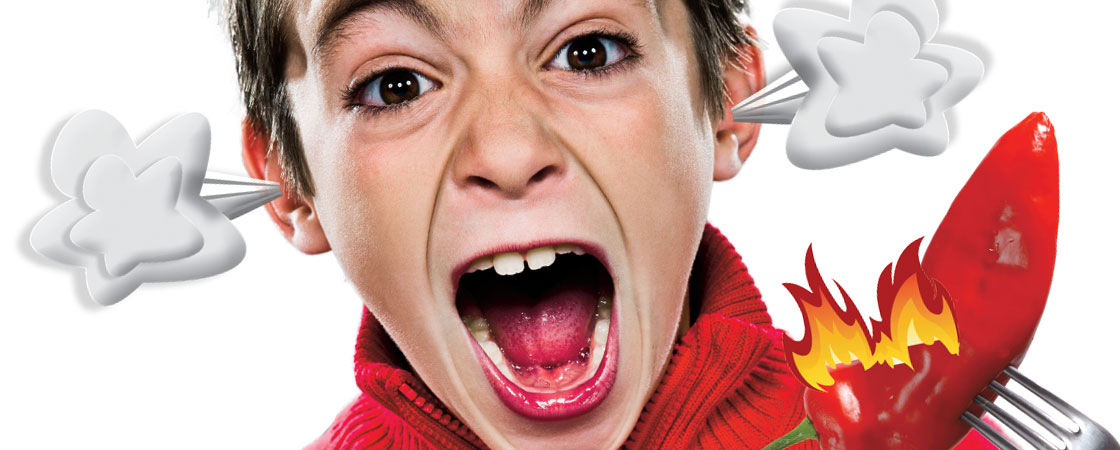Back in 1912, pharmacist Wilbur Scoville invented the Scoville heat scale to measure a pepper’s hotness. For instance, your basic bell pepper has 0 Scoville Heat Units, while a jalapeno pepper can have 50,000! Show your students this infographic that breaks down where all peppers fall on the Scoville Scale.

ISTOCK/GETTY IMAGES (BOY); SHUTTERSTOCK.COM (ALL OTHER PHOTOS)
Death by.... Chili Pepper?
Read this before you take a bite!

By Lauren Tarshis
From the October / November 2018 Issue
Featured Skill:
Vocabulary,
Standards
Fun Fact
Impact of Peppers
For a laugh: This viral video of a boys’ choir in Denmark singing “O Come All Ye Faithful” after popping a mega-hot ghost pepper will show your students the wild physical effects of heat! (The action kicks in around 1:30.)
Science Connection
If your students ever eat a pepper that’s too hot, tell them not to drink water. Instead, go for milk, or even ice cream--those contain a protein that breaks down the spice-producing capsaicin in the pepper.
Text-to-Speech
